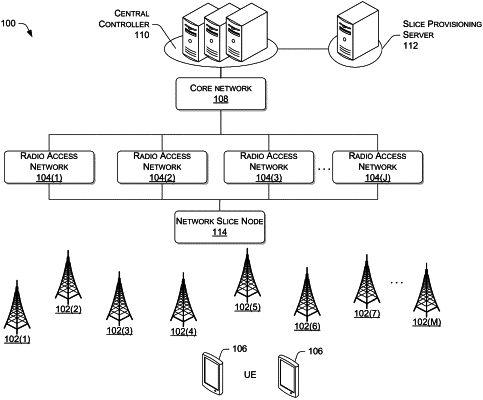| CPC H04W 12/08 (2013.01) [H04W 8/24 (2013.01); H04W 12/37 (2021.01); H04W 48/02 (2013.01)] | 18 Claims |

|
1. A method of implementing a communication network, the method comprising:
instantiating one or more network instances of the communication network, each of the network instances configured to provide a configured set of services that are associated with controlled access to a set of user equipment (UE);
determining that a UE of a subscriber has entered a service area for the communication network;
identifying an access profile for the UE, the access profile including a role of the UE;
analyzing the access profile for the UE and the configured sets of services for the one or more instantiated network instances, the analyzing of the access profile including determining a specified security level of multiple security levels associated with the role of the UE, a latency associated with the UE, a quality of service associated with the UE, and a level of storage associated with the UE;
training a provisioning model using supervised, unsupervised, or reinforcement machine learning and collected access profiles for previous UEs that each identify a previous security level for each previous UE, a previous latency for each previous UE, a previous quality of service for each previous UE, and a previous level of storage for each previous UE;
using the provisioning model, dynamically provisioning one of the network instances for security services that match the specified security level associated with the role of the UE, the latency associated with the UE, the quality of service associated with the UE, and the level of storage associated with the UE as included in the access profile;
auto-provisioning the UE to the dynamically provisioned network instance;
enabling the UE to securely access the dynamically provisioned network instance;
after auto-provisioning the UE to the dynamically provisioned network instance, monitoring network conditions of the communication network, the UE, and the dynamically provisioned network instance;
based on the network conditions of the communication network, the UE, and the dynamically provisioned network instance, determining to provision another one of the network instances;
based on determining to provision the other one of the network instances, auto-provisioning the UE to the other one of the network instances; and
enabling the UE to securely access the other one of the network instances.
|